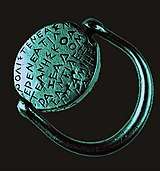Ezerovo, Plovdiv Province
Geography
The village of Ezerovo is situated at the foot of the Aida Mountains and Dragoyna Mountains on the bank of the Kayalikeka River, which is the geographic boundary between the Western and Eastern Rhodopes, flowing into the River Maritsa.
It is located near the villages of Bodrovo (2 km east), Water (6 km south) and Byala reka (Plovdiv region) | Byala reka (6 km northwest) . The closest town is the municipal center of Parvomay, 13 km northwest, and the closest regional town is Haskovo - 28 km east. Not far from the village are Mineral Batts of Haskovo. The size (area) of the village of Ezerovo is 26,318 km2.[2]
The terrain of the countryside is hilly, filled with forests, gullies, hidden small plains, woods, lots of meadows and meadows. The climate of the village is moderate-continental, with very frequent summer droughts. Precipitation is within 650 l / m^2 and is unevenly distributed throughout the year. The most common winds are the western ones, called "Poriaza", and the southern ones, called "white winds", often come from southeast and bring a lot of rain. There are some of the rare species of animal and plant species in Bulgaria. The geographic location of the past is its economic growth: the proximity to the mountain and its pastures has determined the development of sheep farming, and the extensive agricultural lands from the north and west have favored the development of agriculture.
History
The legend says that the village dates back to ancient Thracian times. An old name from the time of the Ottoman domination is the Yedi durali neighborhood (meaning "seven small neighborhoods"); then the village was situated on the territory of today's lake Ezerovo. After changing its geographic location, its name has been replaced by Diptys göl (meaning "lake without a bottom").
The date of the foundations found in the Thracian mound is V century B.C. A number of other ancient artifacts have been discovered, such as a golden diadem, small golden spoon, and bronze mirror. A gold ring with a Thracian tongue was found in 1912 when excavating a tombstone in the area of Prazenaka.[3] The ring weighs 31.3 grams and the surface on which the letters are engraved has an elliptical shape measuring 1.7 x 2 cm.

Judging by the nature of the artifacts, the researchers conclude that the ring was made specifically for the three-day Thracian funeral ritual, which the Greeks call a prosthesis. The famous artifact is the "Ring of Ezerovo" The ring is dated with the 5th century B.C. The ring contains 18 contemporary Bulgarian language words, according to Bulgarian professor Nikolay Todorov.[4]
The inscription on the ring is translated as follows:
Rolisten, I your wife am flying from joy towards
you and you lay down next to me in that sunny day.[4][5]
Another famous archaeological find in Ezerovo is the skeleton of a prehistoric animal.
In 1965, D. Kovatchev, D. Baturov and D. Kaldiyev opened a preserved skeleton of the prehistoric mammal called "Deinotherium giganteum Kaup", which was exhibited at the rectorate of the Sofia University Kl. Ohridski on the top floor, and his copy is in the Paleontological Museum in Asenovgrad.[6][7]
Sightseeing
In the center of the village a main architectural landmark is the church "St. Nicholas", among the oldest churches in the area. Built in 1851 with the permission of the sultan, it was repaired in 1890. It is a three-nave structure without a dome and a bell tower. In later times a bell tower, standing 30 meters from the temple, was made. It is supposed that the icons were made by the iconic icon painter Nikola Odrinchanin. It has been repaired with donations, and now has a beautiful dome. The temple was mainly renovated in 2010.
Among the main sights of the village is the house-museum of the Bulgarian poet Vania Petkova. Its house museum is at the very beginning of the village with a memorial plaque, donated by the municipality of Parvomay.[8]
About half a kilometer after the beginning of the village there is a monument with names of people who died for Bulgaria, some of them from Ezerovo.
About 3 km from the village there is a mineral spring named Chuchura, on which a fountain was built, opened on June 16, 1868, according to the inscription. At its foot there is a small natural pool, which is a great place to fish. Underground sometimes there are old bones of small fish. There is a reservoir, Ezerovo Lake.
References
- "*** Справочник България *** - Село Езерово". Guide Bulgaria (in Bulgarian). Retrieved 2018-09-05.
- "Площ землища Село Езерово". Guide Bulgaria (in Bulgarian). Retrieved 2018-09-07.
- (Journal Article Die Inschrift von Ezerovo)
- "За бог Зевс – бог Живе, Орфей, пръстена от Езерово и античната българска книжнина, book of Nikolay Todorov Goods and books"" (PDF). 2002. Archived from the original (PDF) on August 21, 2018. Alt URL
- "Thracian Ezerovo ring inscription | Cogniarchae". Cogniarchae. 2017-01-09. Retrieved 2018-09-05.
- "Палеонтологичен музей – град Асеновград". BulgariaTravel.org. Retrieved 2018-09-07.
- http://www.geology.bas.bg/geolbal/02_Kovachev.pdf (GEOLOGICA BALCANICA, 35. 3—4. Sofia, Dec. 2006, p. 5—40.)
- Dariknews. "Почина поетесата Ваня Петкова - Общество - DarikNews.bg". dariknews.bg (in Bulgarian). Retrieved 2018-09-09.